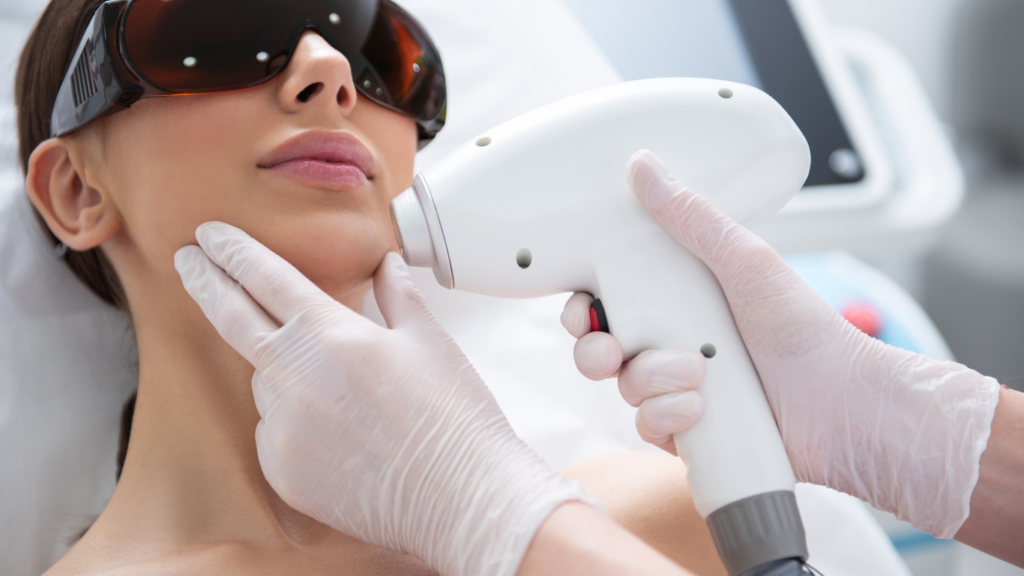Hormones intricately regulate various physiological processes within the human body, and their influence extends even to the realm of hair growth. The delicate balance of hormones, including androgens like testosterone, can significantly impact the density, texture, and distribution of hair. In the context of hair growth, hormonal imbalances can lead to conditions such as excessive facial or body hair, commonly known as hirsutism. Conversely, laser hair removal has emerged as a revolutionary solution, harnessing advanced technology to disrupt the hair growth cycle. By precisely targeting hair follicles with concentrated beams of light, laser hair removal offers a highly effective and long-lasting method to manage unwanted hair, particularly in cases where hormonal fluctuations contribute to persistent growth patterns. Understanding the interplay between hormones and hair growth provides a valuable context for appreciating the transformative effects that laser hair removal can offer in achieving smoother, more refined skin.
How Do My Hormones Impact My Laser Hair Removal Appointment Schedule?
The scheduling of laser hair removal appointments can be influenced by hormonal fluctuations, as hormones play a pivotal role in hair growth cycles. The effectiveness of laser hair removal is closely tied to the growth phase of hair, known as the anagen phase, during which the hair follicles are most responsive to the treatment. Hormonal changes, particularly those related to the menstrual cycle, pregnancy, or conditions like polycystic ovary syndrome (PCOS), can affect the timing and success of laser hair removal sessions. Typically, it is advisable to schedule appointments during a time when hormonal activity is relatively stable, such as the follicular phase of the menstrual cycle. Consulting with a qualified practitioner can help tailor the treatment schedule to individual hormonal patterns, optimizing the outcomes of laser hair removal and ensuring a smoother and more predictable hair reduction process.
How Often Can I Book an Appointment for Laser Hair Removal?
The frequency of laser hair removal appointments depends on the specific area being treated and the growth cycle of the hair. Generally, sessions are scheduled several weeks apart to coincide with the hair growth cycle and ensure that the treatment targets hair in the active growth phase (anagen phase). Here are some general guidelines:
- Facial Areas (e.g., Upper Lip, Chin): Treatments for facial areas are often scheduled every 4 to 6 weeks.
- Body Areas (e.g., Legs, Bikini, Underarms): For body areas, the recommended time between sessions is typically 6 to 8 weeks.
- Back and Chest Areas: These larger areas may have longer intervals between sessions, often around 8 weeks.
- Individual Variations: The specific hair growth patterns and individual responses to treatment may vary. Some people may need more frequent sessions initially, while others may require fewer.
It's important to note that multiple sessions are usually required to achieve the best results, as laser hair removal is most effective during the active growth phase of the hair follicles. Additionally, consistent sessions help target hair at different stages of the growth cycle.
Consulting with a qualified practitioner is crucial, as they can assess your individual needs, skin type, and response to treatment. They will provide personalized recommendations for the optimal schedule based on your unique circumstances.
What Can I Expect During an Appointment for Laser Hair Removal?
During a laser hair removal appointment, you can expect the following general steps:
- Consultation: The process typically begins with a consultation. The practitioner will assess your medical history, skin type, and hair color to determine the most suitable laser settings for your individual needs. They will also discuss the expected outcomes, potential risks, and answer any questions you may have.
- Preparation: Before the actual treatment, the targeted area will be cleaned, and any excess hair will be trimmed to a suitable length. It's important to avoid sun exposure and tanning before the session to minimize the risk of complications.
- Protective Measures: Both you and the practitioner will wear protective eyewear to shield your eyes from the laser light.
- Laser Application: The practitioner will use a handheld device to deliver laser pulses to the treatment area. The laser emits controlled, intense beams of light that are absorbed by the pigment in the hair follicles, leading to damage that inhibits future hair growth.
- Sensation: You may feel a slight tingling or snapping sensation during the procedure. Some people describe it as feeling like a rubber band snapping against the skin. Most modern laser systems incorporate cooling mechanisms to minimize discomfort.
- Duration: The duration of the session depends on the size of the treated area. Smaller areas like the upper lip may take only a few minutes, while larger areas like the legs may take longer.
- Post-Treatment Care: After the procedure, you may experience redness or mild swelling, but this typically subsides within a few hours to a day. Your practitioner may recommend applying a soothing gel or ice pack to alleviate any discomfort.
- Sun Protection: It's crucial to protect the treated area from sun exposure after the session. Sunscreen and avoiding direct sunlight can help prevent complications.
- Follow-Up Appointments: Multiple sessions are usually required for optimal results. Your practitioner will provide guidance on the recommended intervals between sessions.
Are you interested in scheduling an appointment for laser hair removal? Reach out to us today with any questions or concerns that you may have!
